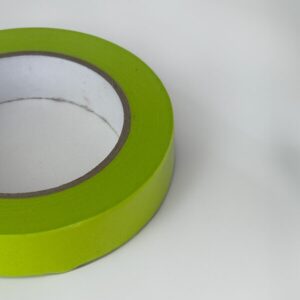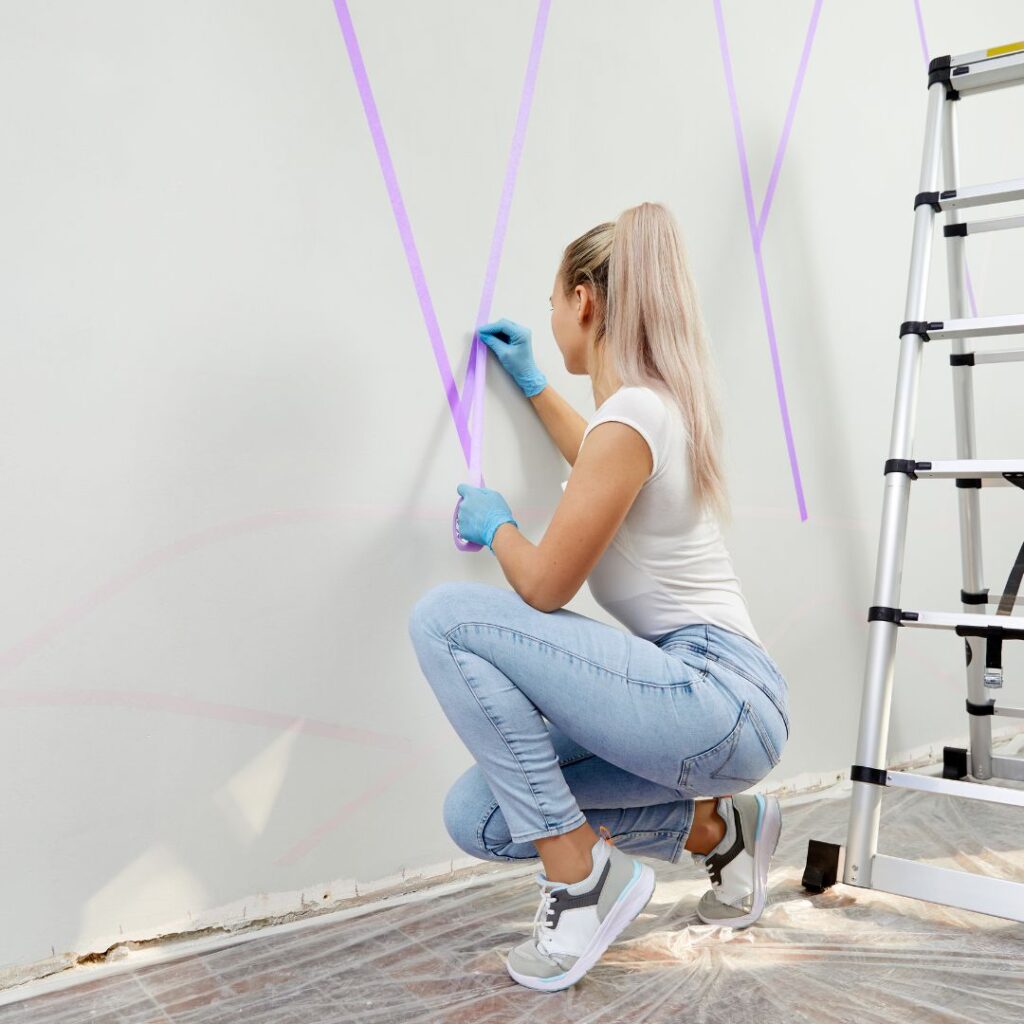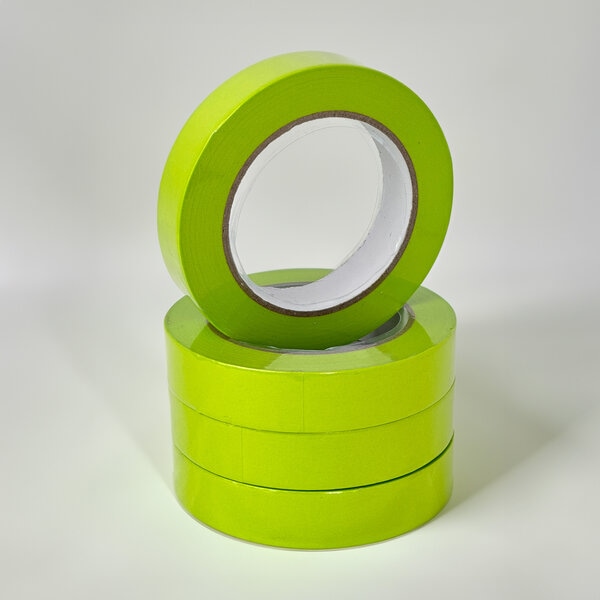Masking tape – it’s that crucial tool in a painter’s kit which ensures our paint jobs are sleek, crisp, and expertly executed. But even with this tape in hand, several questions often loom large, especially when we’re faced with unexpected issues or undesired results. So, let’s dive into the most common queries about masking tape and, in the process, introduce a tape that’s making waves in the painting world due to its innovative design by professional painters!

What is masking tape used for?
Masking tape is like a helper when you paint. Imagine painting a room or a piece of furniture. You don’t want paint on the window, floor, or handles. That’s where masking tape comes in. You put it on places you want to keep clean. It’s like a line that tells the paint where not to go. It’s not just for painting though; people use it to stick things temporarily or mark stuff too.
What’s the difference between masking tape and painters tape?
Both tapes might look the same, but there’s a small difference. Think of masking tape as the general-use tape. It’s good for a lot of things, but it sticks really hard. Painters tape, on the other hand, is special. It’s made to be kind to walls. It sticks, but not too hard, so it doesn’t pull off the paint when removed. It’s the better choice when painting.
Types of Masking Tape:
Paper Tape
Paper tape is often bypassed for painting jobs because it sticks too firmly, potentially leaving behind residue or damaging surfaces upon removal. Moreover, its lack of UV resistance makes it unsuitable for outdoor use, as it can’t withstand varied weather conditions and sunlight effectively. It’s a tape that’s not typically recommended where delicate sticking and easy, clean removal are required.
General-Purpose Painter’s Tape
General-purpose painter’s tape stands out for its reliable performance across various painting projects. It offers sturdy adhesion, resists paint bleed, and ensures clean removal, providing a versatile and reliable choice for painters seeking a blend of ease and professionalism.
Japanese Washi Tape
Washi tape, originating from Japan, is celebrated for its gentle adhesion, especially useful for protecting delicate or freshly painted surfaces without causing damage upon removal. It’s particularly appreciated in projects requiring a mindful approach to safeguard surfaces.
What kind of tape can you paint over?
While you can technically paint over most tapes, painter’s tape is the best for it. When you paint over our tape, it stops the paint from going past it. And when you’re done, it comes off clean, leaving a perfect line. It’s designed for this very purpose.
What tape doesn’t peel off paint?

Nobody wants their hard work ruined when tape pulls off the paint. This is where a good painter’s tape comes in handy. Our tape is specially made to be gentle on walls. It sticks without pulling paint away, making your painting tasks smooth and stress-free.
How do you seal tape before painting?
When you use tape, you want to make sure no paint gets under it. For that, you need to press down the tape’s edges really well. This “seals” it. Our tape is made to stick just right. Once it’s down, paint stays out, and you get sharp lines without any messy leaks.
How do you keep paint from bleeding under masking tape?
A clean, crisp paint line is something all painters aim for and stopping the paint from slipping under the tape is crucial. Once you’ve placed our specially-designed tape firmly on the surface, don’t forget this often-skipped step: sealing the edges. Simply glide a flexible putty knife along the tape edge closest to where you’ll be painting. This little action helps to create a sealed line.
Want an extra tip to ensure super sharp lines? After securing your tape, apply a really light coat of your base paint color over the tape edges with careful paintbrush strokes. This trick creates an additional seal, making sure no other paint sneaks underneath the tape later. Once that base coat on the tape edge is dry, go ahead and paint with your new color. Yes, it takes an extra step, but the flawless results are worth it. With our tape, achieving those professional edges in your paint job becomes a smooth, simple process.

How long before you can put masking tape on paint?
After painting, let the paint dry and set. Usually, waiting a day or two is a safe bet. Once it’s set, you can use tape on it. Our tape is designed to be gentle, so even fresh paint stays put when the tape comes off.
Should you remove masking tape straight away?
It’s tempting to leave the tape and come back later, but it’s best to remove it soon. When the paint is almost dry but still a bit damp, that’s a good time. Our tape is made for this. It peels away easily, leaving fresh paint looking perfect.
Why does my masking tape take paint off?
Sometimes, tape can be too sticky or stay on too long. Or maybe the paint wasn’t completely dry. These things can make tape pull paint off. But with our tape, we’ve worked hard to prevent that. It’s made just for painting, sticking just right without causing trouble.

Let’s introduce our masking tape to you, one that isn’t shrouded in miraculous promises, but rather, one that sticks to the realistic needs of painters. It’s a tape that’s born from firsthand experience, practical insights, and a real understanding of what a painter needs because, quite simply, it was developed by one.
